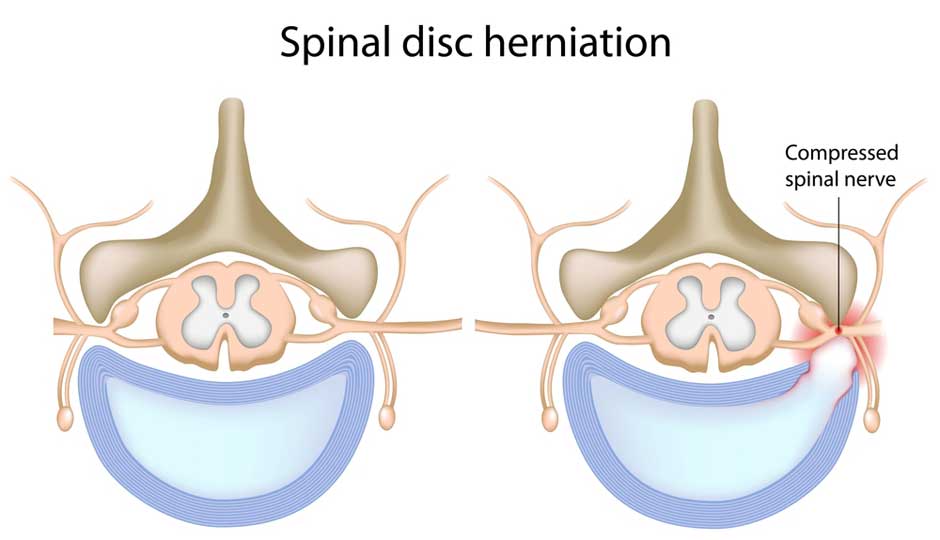
The bones that form your spine are called vertebrae. The small, spongy cushions been the vertebrae are discs. Healthy discs act as shock absorbers for the spine keeping it flexible. A herniated disc occurs when a healthy disc is damaged, bulges and breaks open. It may also be referred to as a slipped disc or a ruptured disc. This condition can happen to any part of the spine, but it mostly affects the lumbar spine region. It occasionally happens in the cervical spine region and rarely in the thoracic spine region. This condition is caused by spinal compression and is commonly the result of direct trauma from an injury or the gradual deterioration of the spinal disc due to aging. When the outer layer of tough cartilage bulges and then actually ruptures and the gel-like fluid of the inner layer presses against the nerves of the spine, the disc has herniated.
Symptoms include pain, numbness and weakness in the area of the body where the nerve travels. A disc that is herniated in the lumbar spine region may cause pain and numbness in the buttock and down the leg. If the damaged disc is not pressing on a nerve, you may have a dull backache or no pain at all. Physicians may order an MRI or CT scan to confirm the herniation or rule out other health problems.
Treatment of a herniated disc is typically conservative in most cases. Physicians will commonly recommend rest and lifting restrictions and may also recommend a combination of heat and ice therapy. Anti-inflammatory medications and/or pain relievers may be prescribed. The physicians and physical therapists at AOK Spine and Pain will examine you and determine the best treatment plan for your condition.
